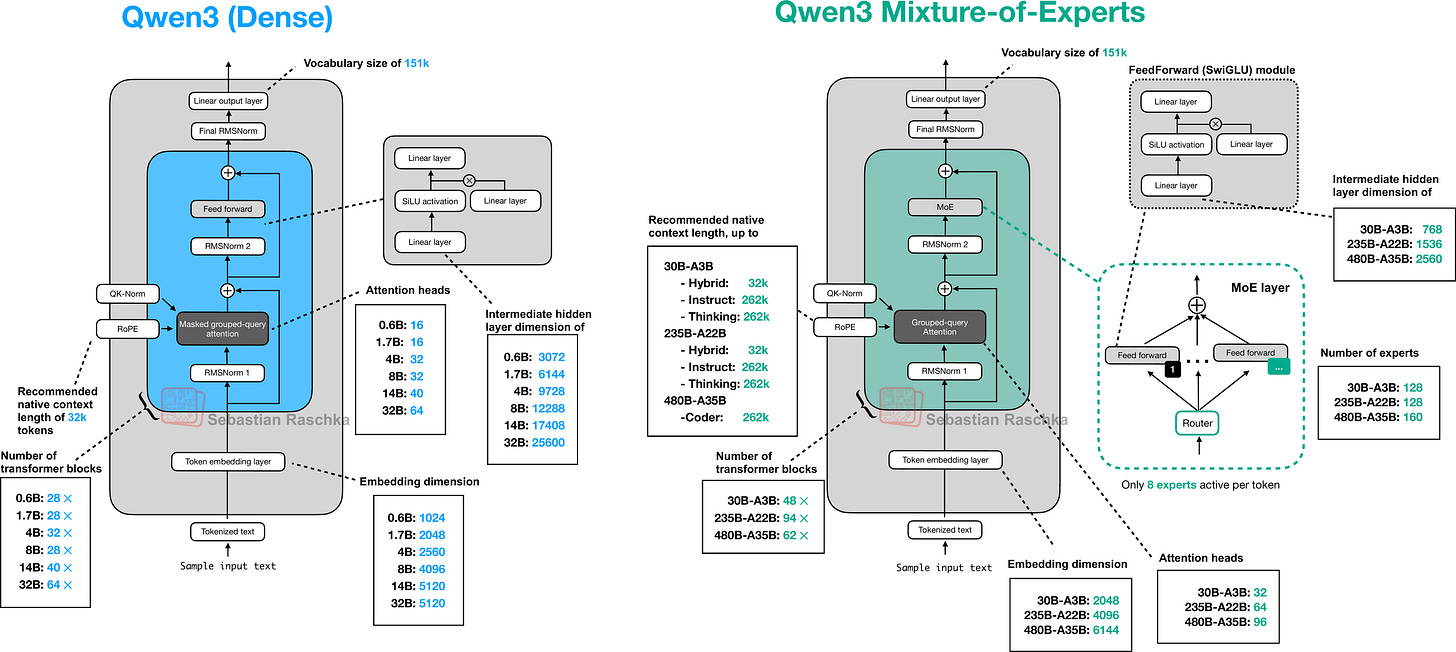Understanding and Implementing Qwen3 From Scratch
A Detailed Look at One of the Leading Open-Source LLMs
Previously, I compared the most notable open-weight architectures of 2025 in The Big LLM Architecture Comparison. Then, I zoomed in and discussed the various architecture components in From GPT-2 to gpt-oss: Analyzing the Architectural Advances on a conceptual level.
Since all good things come in threes, before covering some of the noteworthy research highlights of this summer, I wanted to now dive into these architectures hands-on, in code. By following along, you will understand how it actually works under the hood and gain building blocks you can adapt for your own experiments or projects.
For this, I picked Qwen3 (initially released in May and updated in July) because it is one of the most widely liked and used open-weight model families as of this writing.
The reasons why Qwen3 models are so popular are, in my view, as follows:
A developer- and commercially friendly open-source (Apache License v2.0) without any strings attached beyond the original open-source license terms (some other open-weight LLMs impose additional usage limits)
The performance is really good; for example, as of this writing, the open-weight 235B-Instruct variant is ranked 8 on the LMArena leaderboard, tied with the proprietary Claude Opus 4. The only 2 other open-weight LLMs that rank higher are DeepSeek 3.1 (3x larger) and Kimi K2 (4x larger). On September 5th, Qwen3 released a 1T parameter “max” variant on their platform that beats Kimi K2, DeepSeek 3.1, and Claude Opus 4 on all major benchmarks; however, this model is closed-source for now.
There are many different model sizes available for different compute budgets and use-cases, from 0.6B dense models to 480B parameter Mixture-of-Experts models.
This is going to be a long article due to the from-scratch code in pure PyTorch. While the code sections may look verbose, I hope that they help explain the building blocks better than conceptual figures alone!
Tip 1: If you are reading this article in your email inbox, the narrow line width may cause code snippets to wrap awkwardly. For a better experience, I recommend opening it in your web browser.
Tip 2: You can use the table of contents on the left side of the website for easier navigation between sections.



